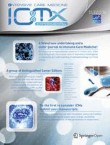A novel echocardiographic imaging technique, intracatheter echocardiography, to guide veno-venous extracorporeal membrane oxygenation cannulae placement in a validated ovine model
Echocardiography plays a fundamental role in cannulae insertion and positioning for extracorporeal membrane oxygenation (ECMO). Optimal access and return cannulae orientation is required to prevent recirculati...
